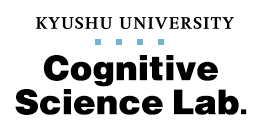

We are quite sensitive to jumpings, e.g. brief silent gaps, on CDs. However, when the sounds before and after the gap are of different frequencies, we hardly notice the gap. It is still unknown and under investigation why a silent gap disappears in such cases, and what type of auditory information processing is involved in the disappearance of the gap. In our lab, we are tackling these problems, conducting psychoacoustic experiments and brain activity recordings such as electroencephalography (EEG) and magnetoencephalography (MEG). (Mori Lab.)
Keywords: gap detection, psychoacoustic experiment, electroencephalography (EEG), magnetoencephalography (MEG)
We comprehend the surrounding 3-D space from the contours and luminance distributions of the objects, their binocular disparities, difference in their moving speeds, their image overlapping, and so on. Making a proper use of those information, we are able to correctly estimate time-to-contact (TTC) of approaching objects. In our lab, we focus on the object contour and investigate its role in human TTC estimation. (Mori Lab.)
Keywords: time-to-contact (TTC), contour
Top athletes are very good at anticipating their opponents’ future actions and the direction of moving ball. Their anticipation is most effective in sports of their expertise. In our lab, we analyze kinematic information of players’ movement quantitatively and in detail, and examine the relation between the athletes’ anticipation based on such kinematic information and their performance. (Mori Lab.)
Keywords: expertise perception, anticipation, kinematic analysis